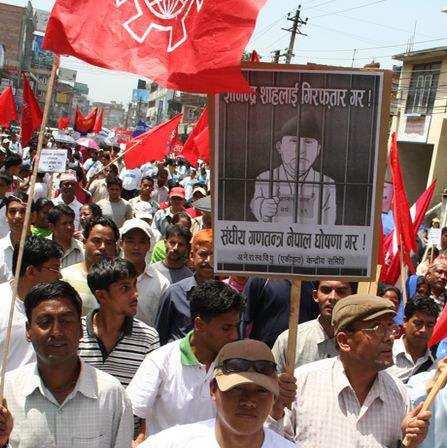KATMANDU, Nepal -- While thousands of Nepalese gathered to mark the first anniversary of the king's humiliating capitulation on April 24, 2006, King Gyanendra was, quite literally, praying for survival. At the Dakshinkali Temple, just outside of Katmandu, the king and Queen Komal oversaw the ritual slaughter of five animals -- a rooster, duck, goat, sheep and water buffalo -- in a ceremony to appease the bloodthirsty deity, Kali. It was on this day last year that King Gyanendra announced he was ending his 15-month autocratic reign, after 19 days of protests in the streets of Katmandu and around the Himalayan nation. At least 18 demonstrators died in clashes with police during the "People's Movement" and are now considered "martyrs" for the democratic cause.
A Year After Uprising, Nepal Takes Halting Steps Toward Peaceful Republic

